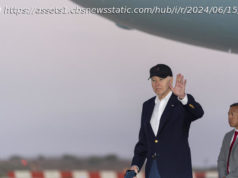Russian President Vladimir Putin announced on February 21 that Russia was suspending its participation in the New START Treaty. What is the New START Treaty and why did he suspend it?
Addressing the Federal Assembly on February 21, President Vladimir Putin placed emphasis on NATO’s intention to impose a strategic defeat on Russia amid its special military operation to demilitarize and de-Nazify Ukraine.The Russian president also mentioned growing calls from the transatlantic alliance to allow on-the-ground inspections of the nation’s nuclear sites. According to the president, these demands sound absurd, especially given that NATO specialists modernized and armed drones to attack Russia’s Engels Air Base, home to part of the airborne contingent of Russia’s nuclear triad. « And now they want to inspect our defense facilities. In the current conditions and today’s confrontation, this simply sounds like some kind of nonsense. »From START I to New STARTThe Treaty between the United States of America and the Russian Federation on Measures for the Further Reduction and Limitation of Strategic Offensive Arms, also known as the New START Treaty, was signed by then-Russian President Dmitry Medvedev and his American counterpart Barack Obama in Prague on April 8, 2010.Initially, START I (Strategic Arms Reduction Treaty) was signed between the United States and the Soviet Union on July 31, 1991 and entered into force on December 5, 1994. The agreement barred its signatories from deploying more than 6,000 nuclear warheads and a total of 1,600 intercontinental ballistic missiles (ICBMs) and bombers.The next stage was START II, which complemented the previous agreement by attempting to establish further limits on strategic nuclear weapons for each party. It was inked on January 3, 1993 and envisaged a two-phase reduction process. By the end of Phase I, the US and Russia were to reduce their total deployed strategic nuclear warheads to 3,800-4,250; while by the end of Phase II, this figure was not to exceed 3,000-3,500.START II was ratified by the US Congress on September 26, 1996. The Russian State Duma followed suit on April 14, 2000, but made the law conditional on preserving the so-called ABM Treaty. However, US lawmakers refused to ratify the Extension Protocol and the 1997 ABM Demarcation Agreements.The 1972 Anti-Ballistic Missile Treaty (ABM) was an arms control treaty signed between the United States and the Soviet Union which limited Moscow and Washington’s ability to build ballistic missile interceptors, and was designed to slow the expansion of the superpowers’ arsenals of nuclear warheads and delivery systems, and to prevent either country from trying to gain an advantage over the other which would upset the global strategic balance.In response, on June 14, 2002, Russia announced its withdrawal from START II due to Bush’s withdrawal from the ABM Treaty.START III, or New START, came as a result of long consultations between the Russian and US governments. In June 2006, Russian President Vladimir Putin came up with an initiative to start a new negotiation process on nuclear arms reduction. Experts started developing the document after the meeting of Presidents Dmitry Medvedev and Barack Obama in London on April 1, 2009 on the sidelines of the G20 summit. The negotiations ended 11 months later with the long-anticipated document being inked by the heads of the two major nuclear powers.The sides agreed that they would reduce their strategic nuclear stockpiles to 1,550 warheads each.






